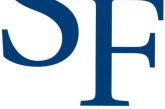
A large world map on the wall takes center stage in Pam Purvis’ office. She’s the facility manager at Sandvik Mining & Construction, a surface mining equipment assembly company branch in Alachua. The map represents the company’s global reach as it ships multi-million-dollar machines across the world. But in the last year, Purvis has been spearheading efforts as the company looks locally for solutions to recycle and reduce waste in the company.
If the numbers are any indicator, the initiative she organized has been wildly successful.
According to a Sandvik report, in 2013, the facility’s recycling program saved:
– 420 pounds of plastic and aluminum
– 121.81 tons of disposed wooden pallets
– 15.94 tons of cardboard
– 1.21 tons of paper
Purvis said she began looking into better recycling options for the company about two years ago. As she started researching how the company could conserve and give back, she said she began to see a world of options opening up.
“The more you get into it, the more you see you can do,” she said.
One of the first measures Sandvik implemented was a machine to bale cardboard. It actually provides a cash incentive for the business as used, baled cardboard brings in a set amount of money per pound.
Another effective recycling method is Sandvik’s scrap metal bin, into which hardware such as old bolts and screws are tossed. Again, there’s an incentive offered for the effort. Sandvik gets paid cash from a precious metal recycling company in Lake City for it.
In the work bays, green, blue and red cans are lined up and labeled to give workers the opportunity to sort glass, aluminum cans and plastic bottles for recycling.
A significant part of implementing recycling is training workers to be mindful of sorting their trash, Purvis said. She noted that many of the workers are from rural areas that don’t have recycling programs like Gainesville’s curbside blue bins.
Purvis said one way management encouraged staff to recycle was by hosting a monthlong competition among departments. Whichever department recycled the most in the month of May won an ice cream party for the division.
She emphasized that companies must be proactive in researching and implementing recycling options.
“It’s not like people are coming around knocking on your door saying ‘Hey, what are you throwing away? Can I have it?’” she said, laughing.
But Sandvik isn’t only looking to reduce waste. It’s trying to streamline all of its resources by reducing the amount of materials needed on the front end. The final assembly “B Building” is a prime example.
It reflects “lean manufacturing,” said production manager Greg Jones, which means reducing the amount of materials and tools needed to complete a job. Previously, workers brought their own toolboxes, which added up to about 150 boxes that took up three bays.
Now, the tools are hung on standardized tool boards the company provides.
By changing policies to reduce waste and the overall footprint of the company, marketing and communications manager Lindsey Brennan said large organizations such as Sandvik have a real opportunity to see a difference.
“Sandvik is such a big organization…we have a legitimate chance to make real change,” she said.
She also noted that progressive policies such as strong recycling programs are key to helping organizations stay competitive and attract top-level talent.
But Purvis isn’t done. Looking to the future, she said she hopes to add a plastic wrap baler to the Sandvik site, which would enable the plant to sell off used plastic wrap for a stipend.
“Everything that can be done to keep it out of the landfill, that’s what we do,” she said.




